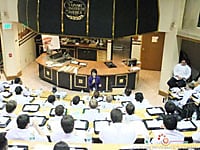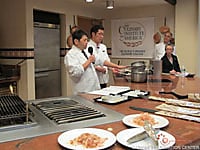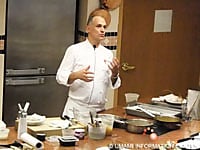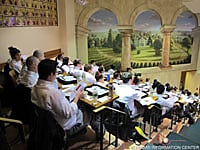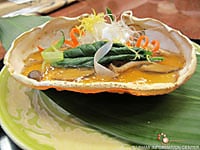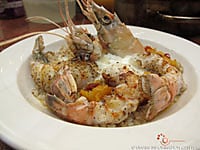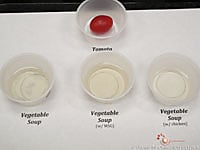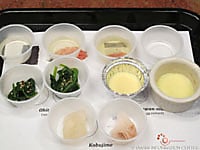Umami Lecture at the Culinary Institute of America
March 2013
"Umami, discovered in Japan," the fifth basic taste following "sweet," "sour," "salty," and "bitter," has been drawing a lot of attention as UMAMI around the world. Chefs and cooks in the western world also take a strong interest in umami. Seizing this opportunity, the Umami Information Center (NPO) held a lecture on umami at the Culinary Institute of America in the US, a professional culinary school with over 60 years of history that leads the world in education of culinary culture and cooking techniques. The lecture was given to 160 students and faculties at the Hyde Park (NY) campus, covering correct knowledge about umami, food ingredients rich in umami and recipes that bring out the best of umami, with the help of the Japanese Culinary Academy (NPO).
In the beginning, Dr. Kumiko Ninomiya, Director of the Umami Information Center, gave a lecture about the basics of umami, including the history of umami discovery, umami substances, food ingredients rich in umami, and umami's functions, with some scientific insights and tasting of tomato and vegetable soups as introduced in the "Tasting Umami" section in the Center's home page.
Next, Messrs. Motokazu Nakamura and Hideki Shimoguchi talked about "dashi and umami of Japanese cuisine." Prior to the lecture, a video was shown to explain about the manufacturing process and features of a dashi using "kombu (kelp)" and "katsuobushi (dried bonito flakes)," and help the audience understand those two ingredients essential for Japanese dashi.
In the cooking demonstration, they gave an explanation and presentation on how to get ichiban-dashi from kombu and katsuobushi. All the participants tasted the kombu-dashi, katsuo-dashi, and ichiban-dashi, and actually recognized the synergistic effects of umami of those dashi.
Then, the participants tasted two versions of Chawan-mushi (Savory steamed egg custard) and Ohitashi (parboiled spinach marinated with soy sauce dressing) with or without dashi, and also tried flunder as sashimi and as kobujime (marinated in kombu). Thus, they could personally experience the importance and functions of umami in dishes.
When two chefs prepared "Chawan-mushi with crab meat" and "sliced raw abalone and lobster," with explanation of the characteristics of Japanese cuisine, the students praised them for the beautiful finish of the dishes.
In the last part of the lecture, Mr. Herve Courtot cooked the dishes that bring out the umami of ingredients. First, he prepared Beef tenderloin dry miso with kombu chips, yuzu truffle. With his own personal anecdotes, he emphasized the importance of umami in dishes and stated that Japanese ingredients rich in umami can also be applied to western dishes. He continued his demonstration with roasted langoustine, buck weed and tomato compote with Roquefort foam on the side. He confessed he had used umami ingredients in western dishes, but without realizing umami. The audience rediscovered that umami is universal.
In the Q & A session after the lecture, the participants raised a lot of questions and expressed their strong interest in umami. Many participants considered umami as a uniquely Japanese taste before this lecture, but now they learned that umami is universal and they can bring out the good taste of food ingredients by understanding ingredients rich in umami and umami's functions.
The Umami Information Center will continue to give lectures as shown here to those who are learning cuisine at schools for cooks in and outside Japan to help them understand umami correctly. We appreciate your continuing support for our activities.

